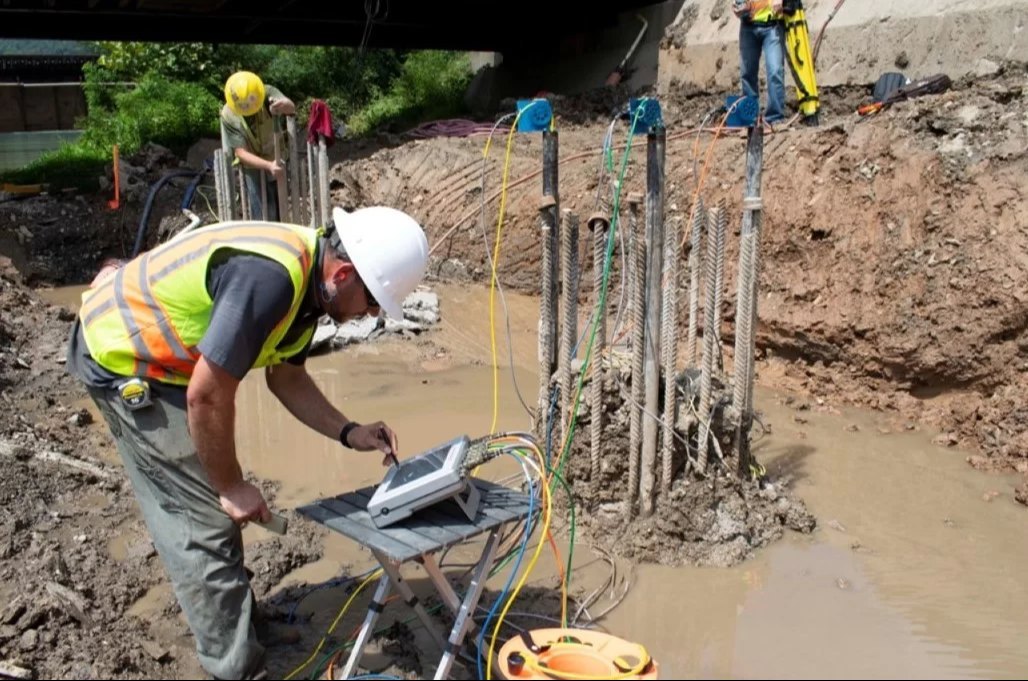Cross Hole Sonic Logging (CSL) tomography is a powerful advancement in non-destructive testing methods used to evaluate the internal condition of deep foundation elements such as drilled shafts and bored piles. While conventional CSL tests detect changes in signal velocity and energy between access tubes, CSL tomography goes a step further by converting that raw sonic data into detailed 2D cross-sectional images and 3D models. This enables engineers to see exactly where anomalies or defects exist within a concrete pile, improving accuracy in structural assessments.
How It Works ⚙️
During a CSL test, ultrasonic signals are sent between access tubes placed in the concrete during casting. These signals travel through the concrete, and the receiving sensors detect variations in travel time and signal strength. In tomography, these measurements are collected at multiple depths and angles, generating a dense data set. Advanced software then uses algorithms such as matrix-based inversion, fuzzy logic, and horizontal slicing to reconstruct the interior condition of the pile.
The result is a visual map showing the velocity distribution within the concrete. Regions with slower wave speeds typically indicate the presence of defects such as voids, cracks, inclusions, or poorly compacted concrete. Fast wave speeds, on the other hand, suggest sound material.
Visual Interpretation of Defects 🧱
The primary value of CSL tomography lies in its ability to display defects visually. In 2D cross-sections, defects appear as shaded or color-coded zones with significantly reduced wave speeds. These images can be reviewed layer by layer along the depth of the pile. Engineers can identify where defects start and stop, their horizontal spread, and their approximate size.
3D tomography models provide a complete spatial view, allowing for rotation and in-depth examination from multiple angles. This is especially useful in large or critical structures where understanding the full scope of potential issues is essential. The 3D perspective enables better defect classification and prioritization for remediation, if needed.
Real-Time Results and Engineering Confidence ⏱️
Modern CSL tomography systems allow for near real-time data processing. This means engineers can interpret and respond to test results quickly while still on-site. Early detection helps reduce costly delays, supports proactive decision-making, and ensures project timelines remain intact.
By using CSL tomography, engineers gain not only more detailed data but also greater confidence in the structural performance of deep foundations. This added insight allows for more informed decisions about whether to accept, reject, or repair a foundation element.
Global Standards and Applications 🌍
CSL tomography is recognized under major international standards, including ASTM D6760-16 and AFNOR NF P 94-160-1. These standards define best practices in sonic testing and ensure consistency and reliability across projects worldwide. Applications include bridges, towers, wind turbine foundations, and any structure where deep foundation integrity is critical.
Conclusion 🏗️
CSL tomography interpretation marks a significant step forward in foundation testing. By transforming raw sonic data into intuitive, high-resolution images, it empowers engineers to evaluate pile integrity with greater precision and speed. As construction demands grow and quality expectations rise, CSL tomography provides the clarity and confidence needed to ensure safe, reliable infrastructure.





Comments